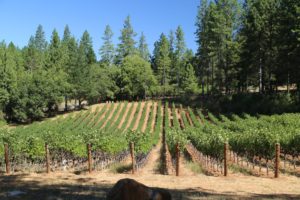
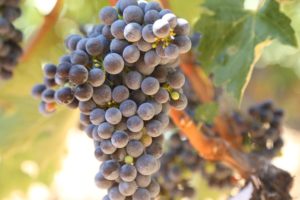
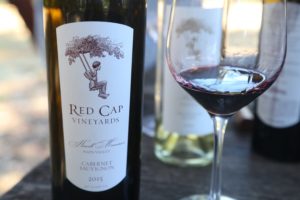 Red Cap Vineyards were founded by husband and wife Tom and Desiree Altemus. They oversee a 6-acre vineyard nestled among the Ponderosa Pine trees, high on the ridge line of Howell Mountain at about 1,900 feet. One doesn’t need to drive far from the floor of Napa Valley for a completely different feel, both in terms of soils, elevation, vegetation, smells and microclimate. And their property is a good example of this; the air feels fresher up here, it smells like a similar elevation in the Sierra Nevada mountains due to the surrounding vegetation. This site is above the fog line; during clear days where fog encapsulates most of the valley below, up here the mornings are filled with sunshine.
Red Cap Vineyards were founded by husband and wife Tom and Desiree Altemus. They oversee a 6-acre vineyard nestled among the Ponderosa Pine trees, high on the ridge line of Howell Mountain at about 1,900 feet. One doesn’t need to drive far from the floor of Napa Valley for a completely different feel, both in terms of soils, elevation, vegetation, smells and microclimate. And their property is a good example of this; the air feels fresher up here, it smells like a similar elevation in the Sierra Nevada mountains due to the surrounding vegetation. This site is above the fog line; during clear days where fog encapsulates most of the valley below, up here the mornings are filled with sunshine.
Tom became a vintner in a fairly short amount of time. Originally from Philadelphia, he took a job with IBM after college. Transferring with the company first to Boulder Springs and later to San Jose, his first introduction to Napa Valley was through several business trips where he began to explore fine wine. Making a complete career change in the late 1990s Tom enrolled in the California Culinary Academy in San Francisco and after graduating soon thereafter started working at some of California’s finest restaurants from Los Angeles to San Francisco. It was during a stint at a restaurant in St. Helena that he met Red Cap’s winemaker, Rudy Zuidema. Rudy has made the wine every year since their inaugural vintage in 2005.
In 1998 Tom (at only 33 years of age) and Desiree purchased this 10.5-acre property on Howell Mountain; at the time much of it was covered in a dense thicket of brush and trees. After securing all the necessary permits (not an easy process), they planted the vineyard in 2003 with winemaker Robert Craig’s advice, and produced their first vintage in 2005 which was merely 50 cases. 2006 was their first official release; total production as of our latest update to this review has increased but is still under 1,000 cases annually. Tom has sold grapes to several premium Napa Valley based wineries over the years including to Davies Vineyards (same family that owns Schramsberg Vineyards); selling more grapes than used for the production of Red Cap offers the ability to increase production in the future.
In early 2022 vintner Chris Klein was having lunch at Brasswood with Zuidema. Rudy mentioned that he was no longer making wines for Red Cap because Tom was in the process of retiring and selling the brand. Rudy was already making wines for Chris’s brand Phamus; he encouraged Chris to give Tom a call. So he did; later that year, along with an investor, Chris purchased the brand Red Cap Wines and all its inventory, but not the Red Cap property, from Tom and Desiree.
Chris was born in Napa and raised in St. Helena. His family has been involved for many years in the wine industry including an aunt, who worked for Grgich Hills. His parents founded Allora Vineyards, which is where Chris learned winemaking, especially from their winemaker at the time, Rudy Zuidema. Considering Rudy, a mentor, Chris even refers to his own career as a ‘Rudyism” as he is now providing consulting services for several small Napa Valley based wine brands.
Chris founded Phamus Wines in 2016; in 2021 he introduced several beers under this brand. One winemaker asked him “why are you also producing beer”, Chris’s answer was simple, “because I love beer”. He used to visit the Russian River Brewery and 3rd Street Aleworks in Santa Rosa and recalls growing up drinking a variety of beer. He produced his first beers at Devil’s Canyon Brewing Company in San Francisco. Keeping the same nomenclature theme as with the wines, one of these beers was called The Promise (Double Dry Hopped West Coast IPA) and the other The Journey (Double Dry Hopped Hazy IPA). Phamus does not produce beers often but does offer the Phamily Beer Club, guaranteeing members access ahead of time to these extremely limited production offerings.
Chris’s family has both Spanish and Irish heritage, while in Dublin taking a tour of Jameson Distillery Bow St., he noticed an Irish whiskey aging in a sherry barrel. It was this visual that connected his family heritage and was a personal inspiration to both his heritage and his love of spirits. Phamus plans to produce a limited number of spirits in the coming years.
Red Cap continues to produce a limited amount of Sauvignon Blanc and their estate Cabernet Sauvignon. But Chris has introduced additional wines originally bottled under Phamus to now be bottled under Red Cap including a sparkling wine, Chardonnay, Pinot Noir and a Reserve Estate Cabernet Sauvignon. Phamus continues to produce beer but as of the 2022 vintage, is no longer producing wine.
And associated with Red Cap since the early days is Michael Nguyen (originally from San Jose); he is now a partner in Red Cap with Chris. Michael originally met Tom at one of the annual Howell Mountain Appellation tastings in San Francisco in 2010. He remembers approaching Tom’s table because the tables of other more well known producers at the time were surrounded by people. Tom had no one in front of his table – and as Michael would soon find out, Tom had no more wine to pour. Michael was an interested consumer who first fell in love with wine in his early 20s at a Christmas party; the wine that hooked him was a bottle of Cakebread Chardonnay.
He and Tom began talking; Michael mentioned he would like to work in the wine industry and offered to assist Tom. So Tom invited him up to see the property; Michael remembers that Tom didn’t have much for him to do but gave him a rake and said, “go rake leaves”. Michael grew up in San Jose without a front or back yard. Working in a non urban setting was a new experience for him. He loved it. But he soon realized his skills would be more valuable to Tom in other ways; he offered to help the young brand with marketing and sales.
Instagram was launched in October of 2010; Michael was a very early adopter of the platform. He remembers driving up to Red Cap taking a bunch of images of the vineyard and then posting them on Instagram. He started to accumulate followers so he asked Tom to create his own account and post photos relating to the theme of, ‘a day in the life of a vintner’. The focus was never to sell wines online through social media but to promote the brand and the lifestyle. In the early days of the platform, Michael recalls they were trying a number of ideas to figure out what worked best to build a community. He knew he never wanted to sell the wines on line but rather promote both the wines and old school Napa lifestyle.
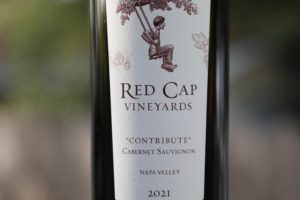 Michael told Tom one day, “we will not win by ourselves, we will be stronger if we involve our neighbors”. So he approached Mike and Kara Dunn of Retro Cellars, Elton Sloan at Robert Craig and Bob Foley at Robert Foley Vineyards – and encouraged them all to create Instagram accounts. And then Rudy. He used them to assist in creating live experiences and engagement on Instagram with existing customers and potential new customers. None of this was in their marketing plan – but it turned into a powerful marketing strategy.
Michael told Tom one day, “we will not win by ourselves, we will be stronger if we involve our neighbors”. So he approached Mike and Kara Dunn of Retro Cellars, Elton Sloan at Robert Craig and Bob Foley at Robert Foley Vineyards – and encouraged them all to create Instagram accounts. And then Rudy. He used them to assist in creating live experiences and engagement on Instagram with existing customers and potential new customers. None of this was in their marketing plan – but it turned into a powerful marketing strategy.
Michael remembers their 2012 vintage was the first vintage that entirely sold out upon release. Tom asked, “what do we do now”. Michael replied, “we will continue to drive brand awareness”. So they did – promoting events the wines were poured at and continuing to engage with followers. In the early years, up to 50% of the Red Cap wines were in production. Michael has since transitioned into selling the majority of the wines direct to consumer.
Because of Michael’s enthusiasm for the Cakebread wines, he began visiting Cakebread Cellars more often and eventually became friends with Jack Cakebread. In fact Michael’s first Instagram handle was MrCakebread. Instead of a nomenclatural handle most associated with Cakebread Cellars, he realized he should choose a different name. The origins of his current handle came about organically. One day Tom commented on Michael’s appearance, saying, “Michael, you know, you sorta look like a monk. You spend a lot of time on Howell Mountain already – lets just call you, “the Howell Monk”. The moniker stuck and Michael created his still existing and active Instagram account: TheHowellMonk.
To Michael the relationships he has made in Napa Valley have been the most rewarding part of his career; it is the collaborative and close-knit community on Howell Mountain that is the most special to him including making life-long friends. He and Chris will preserve Tom and Desiree’s heritage with Red Cap, continue to build customer community, champion their core values and core wines but add their own voice to the brand and grow both its production and presence. And always pay it forward. They consider themselves stewards of Red Cap, doing all they can to preserve it for the next generation – whomever that might be. And that is an ethos that comes straight from the heart.
Once someone sees the soil of this vineyard site one quickly determines how Tom and Desiree decided upon the name Red Cap. Its profile is noticeably red and rocky, featuring iron-rich volcanic soils that have been oxidized over time due to exposure to the elements. The soils are also nutrient poor, not necessarily bad for growing premium wine grapes, however Tom introduces small amounts of organic material each year next to the vine trunks.
The swinging boy on the label often immediately captures the attention of those who are seeing the wines for the first time. Tom & Desiree have three children and were inspired to create a label such as this one to, “…represent the spirit of wonder and fun that we all try to embody on a daily basis.” The image of this swinging boy was designed by talented Camas, Washington based scratchboard illustrator, Roger Xavier.
Tom’s true passion is in the vineyard and as he says, “this is his best job to date”. We can see why after visiting; the vineyards grow in a very zen-like location and are surrounded by tall pine trees; this is hillside Napa Valley at its best.
Tom used to net the vineyard but no longer does this; he wryly told us netting his vineyard is like putting panty hose on a hairy leg! The time and expense spent netting ultimately did not justify the amount of grapes saved from the birds. During harvest picks are often at staggered intervals; harvest can easily take a month or more despite the small size of the vineyard. The reason being is Red Cap only picks when the grapes are ripe and often this may mean picking merely several rows or blocks of the vineyard. As a result, all wine is fermented in small lots with whole berry fermentation (no jacks or stems) and punch-downs are done by hand.
With a culinary background Tom understands the importance of pairing food with wine. So its not surprising then that two hallmarks of their vineyard site and the Red Cap wines are bright acidity and refined tannins, perhaps startling considering that some of Napa Valley’s most tannic wines often come from the hillsides. Fermentation is conducted using non-inoculated yeasts which naturally exist on the skins of the grapes; fermentation is cold and lasts for an extended period of time. Their Cabernet Sauvignon is typically aged in French oak for approximately 20 months.
Select Wines
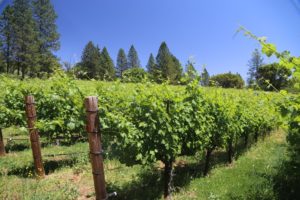
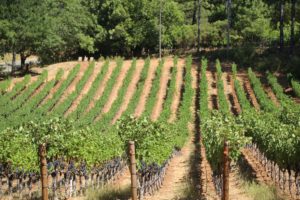
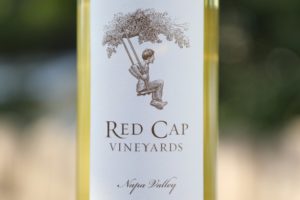 Sauvignon Blanc
Sauvignon Blanc
One shouldn’t overlook Red Cap’s Sauvignon Blanc; a number of vintages were sourced from a premium vineyard in Rutherford. These are not the green or grassy style of wines from this variety – rather they have beautiful texture, creamy with viscosity, are silky smooth but with weight and intensity of fruit. These bottlings can be consumed early but also have the character to be able to age for a few years after release.
The 2022 Red Cap Vineyards Sauvignon Blanc was sourced from both the McGaw Vineyard in Rutherford and the Alko Ranch in Pope Valley. This wine is 84% Sauvignon Blanc and 16% Sémillon. It is pale to medium straw color; it smells elegant with aromas of peach blossom, light honeysuckle, pineapple, jasmine, white peach and white nectarine. And a nicely saddled, is an herbal but not green character including scents of lemongrass, kaffir lime leaf and citrus blossom. The palate offers a saline attribute with a rounded and velvet-like texture. On the palate there are flavors of green apple, kiwi, pear, nectarine, peach, pineapple, a light note of pina colada. Lingers brightly light with plenty of freshness and a lasting note of pomelo. Bring a bottle of this to the coastline in Sonoma County, on a warm fall day and enjoy the rugged vistas with someone special and a tray of freshly shucked oysters.
Starting in 2023 the Sauvignon Blanc will be named the Host; the style of the wine won’t change and neither will the look of the label.
The 2020 Red Cap Vineyards Sauvignon Blanc is a blend of 84% Sauvignon Blanc and 16% Sémillon. This wine is medium straw in color; the bouquet is tangy, showing some mild oxidative qualities 5 years post vintage. These scents include honey, lemon zest, chamomile, dried thyme, a saline character, a waxy attribute, pine-resin, pineapple, dried orange peel, bruised apples and a note of walnut skin. Time in the bottle has certainly changed its aromatics and if we had to guess, also increased both its aromatic diversity and intensity of its terpenic scents. On the palate there are flavors of golden delicious apple, dried apricot, yellow nectarine, Meyer lemon, grapefruit, chamomile, hazelnut and like on the bouquet, a sense of salinity. The mouth feel is silky, like running one’s fingers over a thick cashmere sweater. This wine still has plenty of freshness and lift, especially noticeably on the tangy finish. From personal experience, this wine pairs very well with stir fried fresh Castroville baby-artichoke hearts sliced up with a pinch of salt, olive oil and lemon juice. Keep it simple. Keep it delicious.
Cabernet Sauvignon
All their vintages are 100% varietal Cabernet Sauvignon from the 3 distinct clones that are planted on site.
As Tom was planning on phasing out the production of Red Cap wines in 2021, he sold the majority of his grapes. After the transition in ownership, it was decided to produce a one-off wine this year called ‘Contribute’, a 100% varietal Cabernet Sauvignon with grapes from both Red Cap Vineyards and a vineyard in Coombsville and St. Helena. The 2021 Red Cap Vineyard ‘Contribute’ (tasting notes will be added here in September 2025).
The 2019 Red Cap Vineyard Cabernet Sauvignon is deep ruby and opaque; the bouquet needs some time to fully open and evolve. Its aromatics are marked by layers of sweet baking spices including dark cocoa, but with plenty of fruit at play here including blackberry, boysenberry, dark plum and dark raspberry. Elegant. Lingers dark fruited and savory with a note of dried herbs including sage, toasted cedar, chalk and dried tobacco leaf. This wine is balanced, with plenty of depth and layers. The gravelly tannins are fairly tumbled at this age with some light edges; these persist with a dusty character outpacing the fruit on the finish. This wine has plenty of life ahead of it with the proper cellaring.
The 2018 Red Cap Vineyard Cabernet Sauvignon is deep ruby; sweetly fruited the bouquet offers aromas of blackberry, boysenberry, Pakistani mulberry, dark cherry, dark cocoa powder, tobacco spice, suede, and assorted sweet baking spices. The baking spices show more in this vintage as compared to the 2019 bottling. This wine is aging extremely well and is showing in a sweet spot right now 7 years post vintage. Its profile is both red and dark fruited with flavors of dark cherry, blackberry, boysenberry, plum and dark cocoa powder. Highly expressive, bright and still very much fresh, the finish lingers red fruited with gravelly textured tannins and a light chalky character. Both texture and flavor persist for quite some time on the extended finish.
The 2014 Red Cap Vineyard Cabernet Sauvignon is visibly dark with purplish tinges on the rim; reveals dry dust on the bouquet quickly masked by the intensity of the fruit aromatics with blackberry and plum. Also hints of old cedar box and perhaps a kiss of sage. Offers both red and darker fruits on the palate; this is a fairly opulent wine with a noticeable intensity of fruit from start to finish. Lingers with mouthwatering acidity and fairly pronounced tannins, but they are not course textured, rather are firm and fine-grained. And this wine is a product of the vintage; approachable and ready to drink in its youth.
2011 was a challenging year in Napa Valley due to colder growing conditions and rain at inopportune times including early in the growing season and during harvest. Tom elected not to use fruit from his lower vineyard and he and Rudy were extremely selective in which grapes they chose to ferment – paying extra attention to sorting. The 2011 Red Cap Cabernet Sauvignon offers dark fruit on the bouquet along with hints of white pepper. Elegant and still fruit forward after 8 years this wine was showing wonderfully at the time of our tasting (2019) and still has plenty of aging ahead. Nicely balanced the wine shows no harsh edges; it finishes smoothly with slightly dusty fine-grained tannins lingering softly. This wine is a perfect example of why one should never blindly follow wine critics and wine scores.
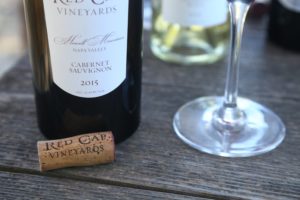 The 2006 Red Cap Cabernet Sauvignon was tasted about a month after bottling, so this wine still had some time before being released. However, it was already drinking quite nicely with bright lively fruit and great acidity. The wine is dark ruby in color with the bouquet showing notes of cocoa, cherry cola and floral nuances. As the wine breathes additional layers of fruit are revealed. The palate is rich with cherry and plum accompanied by a kiss of vanilla from the oak. Their oak program is structured to not dominate, rather to let the varietal characteristics show. The finish lingers with notes of spice; the tannins are structured, in balance and fairly delicate. This bottling is an ideal food wine; it is not a Cabernet Sauvignon that is so tannic out of the gate one needs to wait years for it to soften, nor does it present attributes that are overly ripe. As Tom says, it has a “power combined with elegance”. We had the opportunity to also try this wine again after it had seen another year of bottle age and after it was officially released. Along with the rich fruit it continues to express a pleasing earthiness both in the bouquet and on the palate. The flavor profiles are very well integrated and layered – with good balance throughout. This is an impressive inaugural vintage; a year in bottle age has treated it well.
The 2006 Red Cap Cabernet Sauvignon was tasted about a month after bottling, so this wine still had some time before being released. However, it was already drinking quite nicely with bright lively fruit and great acidity. The wine is dark ruby in color with the bouquet showing notes of cocoa, cherry cola and floral nuances. As the wine breathes additional layers of fruit are revealed. The palate is rich with cherry and plum accompanied by a kiss of vanilla from the oak. Their oak program is structured to not dominate, rather to let the varietal characteristics show. The finish lingers with notes of spice; the tannins are structured, in balance and fairly delicate. This bottling is an ideal food wine; it is not a Cabernet Sauvignon that is so tannic out of the gate one needs to wait years for it to soften, nor does it present attributes that are overly ripe. As Tom says, it has a “power combined with elegance”. We had the opportunity to also try this wine again after it had seen another year of bottle age and after it was officially released. Along with the rich fruit it continues to express a pleasing earthiness both in the bouquet and on the palate. The flavor profiles are very well integrated and layered – with good balance throughout. This is an impressive inaugural vintage; a year in bottle age has treated it well.
—
Locally one might be able to find the wine at several wine shops within Napa Valley. And Red Cap is a member of the Howell Mountain Appellation and continues to participate in their consumer tastings including the annual tasting held in San Francisco in early spring and in summer at Charles Krug Winery. Red Cap also maintains a mailing list on their website. Sometimes a very limited number of select library bottlings are available for sale on the website. For more information or to join their wine club, visit: www.redcapvineyards.com
Tom and ‘The Howell Monk’
The beers of Phamus






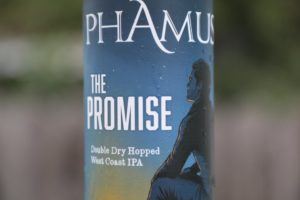
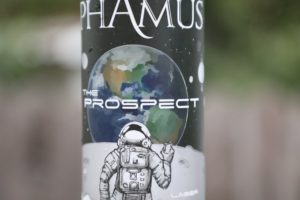

Easter 2019 and we just tried the 2006 Red Cap Howell MtCabernet. Awesome great fruit, nicely balanced and rounded tannin structure. Beautiful!!
John – great to hear your testimony on how the 2006 has aged! I need to get back up to Tom’s place and re-taste the current releases.
We just opened the Red Cap Cabernet 2009, had it in the cellar on the rack …. unbelievably good
Judith – I hope to again try one of the early vintages of Red Cap at some point 🙂 Glad to hear the 09 had aged so well.